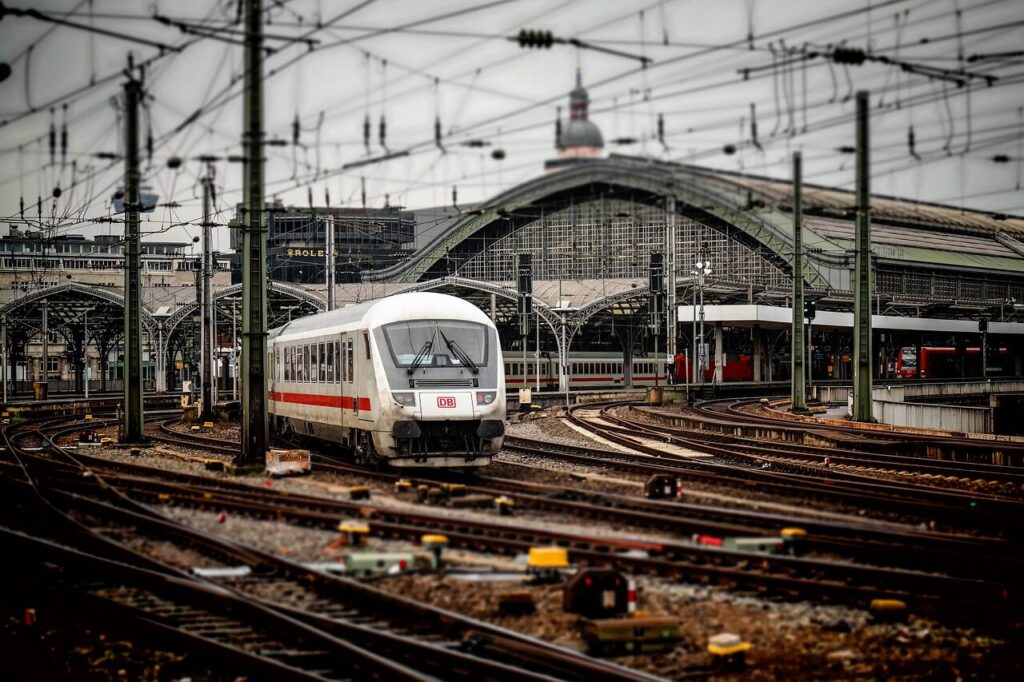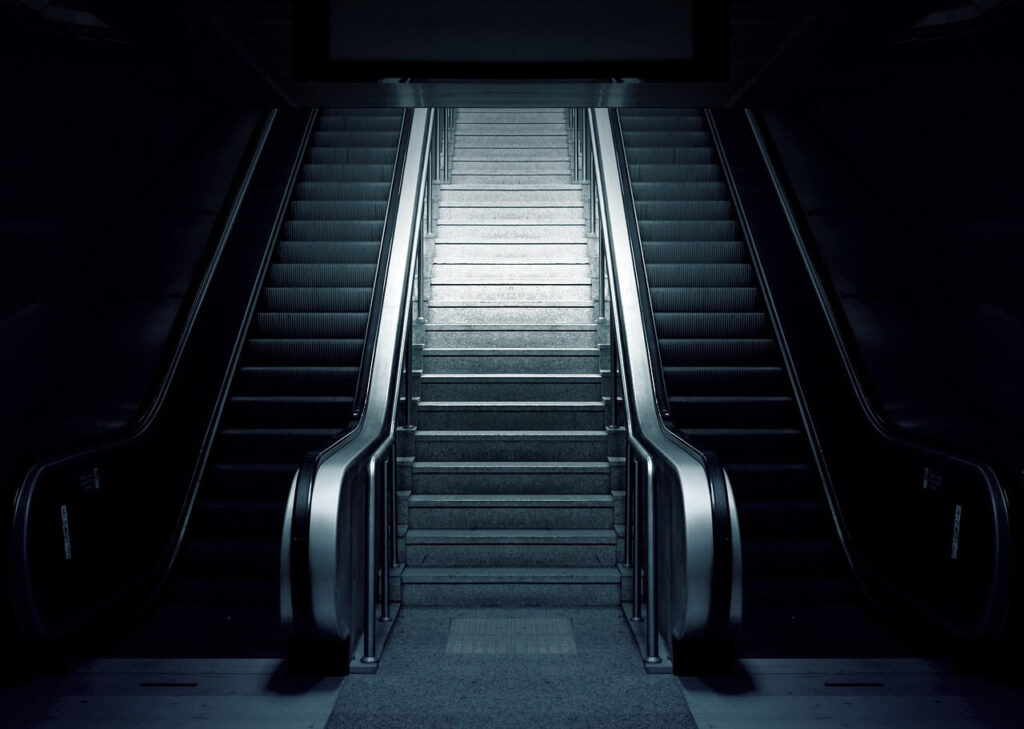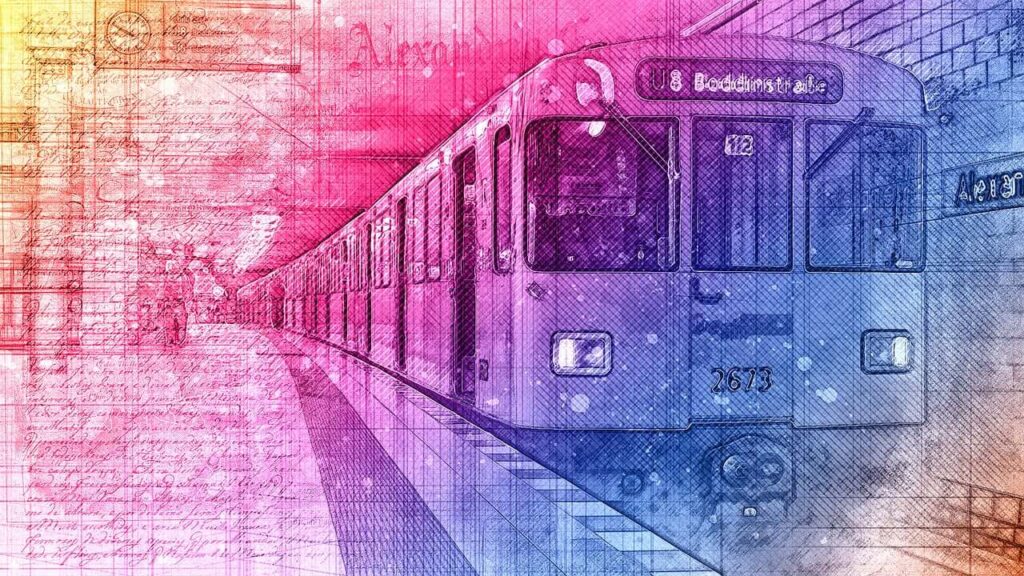What Technology is used in Pune Metro?
The 23.3 km “overhead” Pune Metro will feature a state-of-the-art “regenerative braking system.” What sets this novel mechanism apart is its capacity to optimize the frictional energy generated during the “Puneri Metro’s” braking operations.
Wabtec has been given a contract by Alstom Transport India to supply train braking systems for the Metro Line 3 project in Pune, India.
Under the terms of the contract, 22 trains totaling 66 cars in a three-car arrangement will run on the 23 km-long Hinjewadi-Shivajinagar elevated Metro Line 3.
The Alstom facility in Sricity, India, is currently producing these automobiles. It is said that the trains would have vital safety measures thanks to the new braking system.
The firm claims that the device will also shorten the time between train maintenance intervals.
Smart Metro Platforms
Wabtec is a recommended brake supplier for the SMART Metro Platform, having previously supplied comparable braking solutions for the Indian metro projects in Chennai, Kochi, Lucknow, and Mumbai.

The company’s portfolio in India has been strengthened by its most recent order for Pune IT City Metro Rail Limited and Pune Metro Rail Development Authority.
Pune Metro Line 3 is expected to connect the core Shivajinagar area to the Hinjewadi IT cluster by April 2025.
Technology Behind Pune Metro
Automatic Fare Collection (AFC) System:
The Automatic Fare Collection system is the key component of every metro system. Passengers using Pune Metro will benefit from contactless ticketing’s convenience.
The AFC system uses RFID (Radio Frequency Identification) technology, which allows users to easily enter the metro network with smart cards and tickets based on QR codes. In addition to improving passenger convenience, this technology helps metro authorities collect revenue more efficiently.
Rolling Stock
The rolling stock of the Pune Metro is of the latest generation. In order to guarantee efficiency and safety, modern metro trains are outfitted with cutting-edge control and communication technologies. With the use of regenerative braking technology, extra energy produced during braking can be converted into electrical energy that the train can consume or send back to the grid.
Communication-Based Train Control (CBTC)
The Communication-Based Train Control technology significantly improves both the safety and efficiency of the Pune Metro system. With the use of the contemporary signaling technology known as CBTC(Communication-Based Train Control system) trains can instantly connect with a central control system. This technology makes the metro system safe and able to run trains at shorter intervals by enabling precise train placement, collision avoidance, and efficient traffic management.
Intelligent Transport Systems (ITS)
Intelligent Transport Systems, comprising a network of cameras, sensors, and communication devices, are integrated into the Pune Metro. Real-time monitoring of train operations, stations, and infrastructure is made possible by this system. In order to guarantee passenger safety, it also helps with issue detection and reaction.

Power Supply and Traction
The sophisticated traction and power supply systems of the Pune Metro are essential. The electricity that powers the trains is provided to them by overhead catenary systems. These systems lower emissions and advance sustainability by offering a reliable and effective power source for Technology is used in Pune Metro.
Underground Construction Techniques
The Pune Metro’s underground parts are among its engineering marvels. For tunnel excavation, sophisticated tunnel boring machines (TBMs) are employed. These enormous devices have state-of-the-art technology that allows them to precisely drill into the earth with the least amount of disturbance to the surface.
Green Initiatives
At the heart of the Pune Metro project is sustainability. The metro stations use waste management systems, rainwater harvesting, and energy-efficient lighting as examples of green building practices. The project’s design also incorporates solar power generation, which lowers the metro system’s carbon footprint.
Passenger Information Systems
The Pune Metro has state-of-the-art Passenger Information Systems installed to improve passenger satisfaction. Travelers are guaranteed a smooth ride with real-time information on train schedules, station amenities, and service updates provided via LED displays, audio announcements, and smartphone apps.
Depot and Maintenance Facilities
The most recent technological advancements are included into the Pune Metro’s depots and maintenance facilities to guarantee the dependability and safety of the rolling equipment. The trains are inspected and maintained with the help of sophisticated robotics and diagnostic systems, which reduce downtime and guarantee the trains’ longevity.
Security and Surveillance
Passenger and metro infrastructure safety and security come first. Advanced surveillance systems, such as CCTV cameras and emergency communication equipment, are installed throughout the Pune Metro. These technologies are essential for preventing incidents and providing quick emergency response.
Director of Sales and Marketing at Wabtec Transit in India “Wabtec‘s ongoing commitment to deliver high performance and safety critical products for the metro rolling stock segment in India is reinforced by this order,” stated Preetam Ganguly.
“Our in-country engineering team is primarily responsible for designing this braking system, which also features a significant amount of “Made in India” content.”
Great Example of Engineering and Technology
Pune, an energetic city in the center of India, is going through a change that might completely alter the city’s transportation system. Pune Metro is an impressive example of contemporary engineering and technology. It was designed with the goal of reducing traffic on the city’s roadways and offering a sustainable form of public transit.
This 1,000-word essay explores the complex network of systems supporting the Pune Metro, highlighting the ingenuity and knowledge that turn this undertaking into a technological wonder.
Pune, a city renowned for its vibrant culture and ancient history, has long struggled with traffic jams. The necessity for an effective public transportation system grew as the population and urban expansion increased. A better future for the city is expressed at by the 2019 launch of the Pune Metro project.
When the Pune Metro is finished, it will have two corridors, Line 1 and Line 2, that together span 54.58 kilometers. Line 2 runs from Vanaz to Ramwadi, and Line 1 runs from Pimpri-Chinchwad to Swargate. These corridors are intended to link important parts of the city and offer a diversion from the always crowded roadways.

CONCLUSION : Pune Metro – A Technological Marvel
In terms of technological innovation and urban growth, the Pune Metro project represents an important advancement. It promises to completely transform local public transportation by using innovative methods and eco-friendly practices that will make traveling safer, more effective, and less harmful to the environment.
In addition to guaranteeing the system’s dependability and safety, the integration of technologies like CBTC, AFC, and modern rolling stock also establishes a standard for upcoming metro projects in India. The sustainable design and green activities of Pune Metro show a dedication to lowering carbon emissions and creating a healthier living environment for the city’s citizens.
Pune Metro is an excellent example of how engineering and technology can be used to meet the issues of urbanization as the city grows and changes. It is evidence of the city’s aspiration for a more advanced and interconnected future in which advanced technology will significantly influence the way people travel.
Pune’s citizens will see directly how technology can drastically improve their daily lives in the years to come when the Pune Metro project develops and is completed. The Pune Metro is a technological marvel that opens the door for India’s cities to become smarter, more sustainable, and more interconnected. It is more than just a transportation system.Hope you have a got all your answers regarding “What Technology is used in Pune Metro?”

Also Read : Google Pixels: Now Google Pixel phones will be made in India, know what will be the price?
Q1. Which material is used for making Pune Metro?
Ans. – An aluminium train set manufactured by Titagarh Rail Systems for the Pune Metro.
Q2. Is Pune Metro electric?
Ans. – Train overhead electric wires receive the 25 kV power supply that is needed for traction (OHE). Every metro station has been provided with a 33 kV power supply. For this reason, 33 kV electrical lines have been installed across the 33.2 kilometer course. Every station has an Auxiliary Sub Station (ASS) built.
Q3. Who developed Pune Metro?
Ans. – MAHA Metro, a Special Purpose Vehicle (SPV) of the Government of Maharashtra and the Government of India, is in charge of the MAHA Metro Pune Metro project. World-class metro stations and the surrounding neighborhoods with their rich cultural heritage are what the initiative aims to create.
Q4. Which company is doing Pune Metro work?
Ans. – Maharashtra Metro Rail Corporation Limited Maharashtra Metro Rail Corporation Limited (MAHA-METRO).
Q5. What is the salary of Pune Metro?
Ans. – For an Associate, the average METRO SERVICES pay is around ₹2,37,685 annually, while for a Senior Consultant, it is around ₹13,79,385. Employees at METRO SERVICES give the overall perks and compensation package 3.1 out of 5 stars.
I am Swapnil Duphare , Owner of Website : HeliumMinings – I am Digital Marketer from last 6 Years and Write Blog Articles based on Helium Minings & Crypto currency Related Articles.
I am From Nashik, Maharashtra, India.
Also Check Website : SEOWIRES
